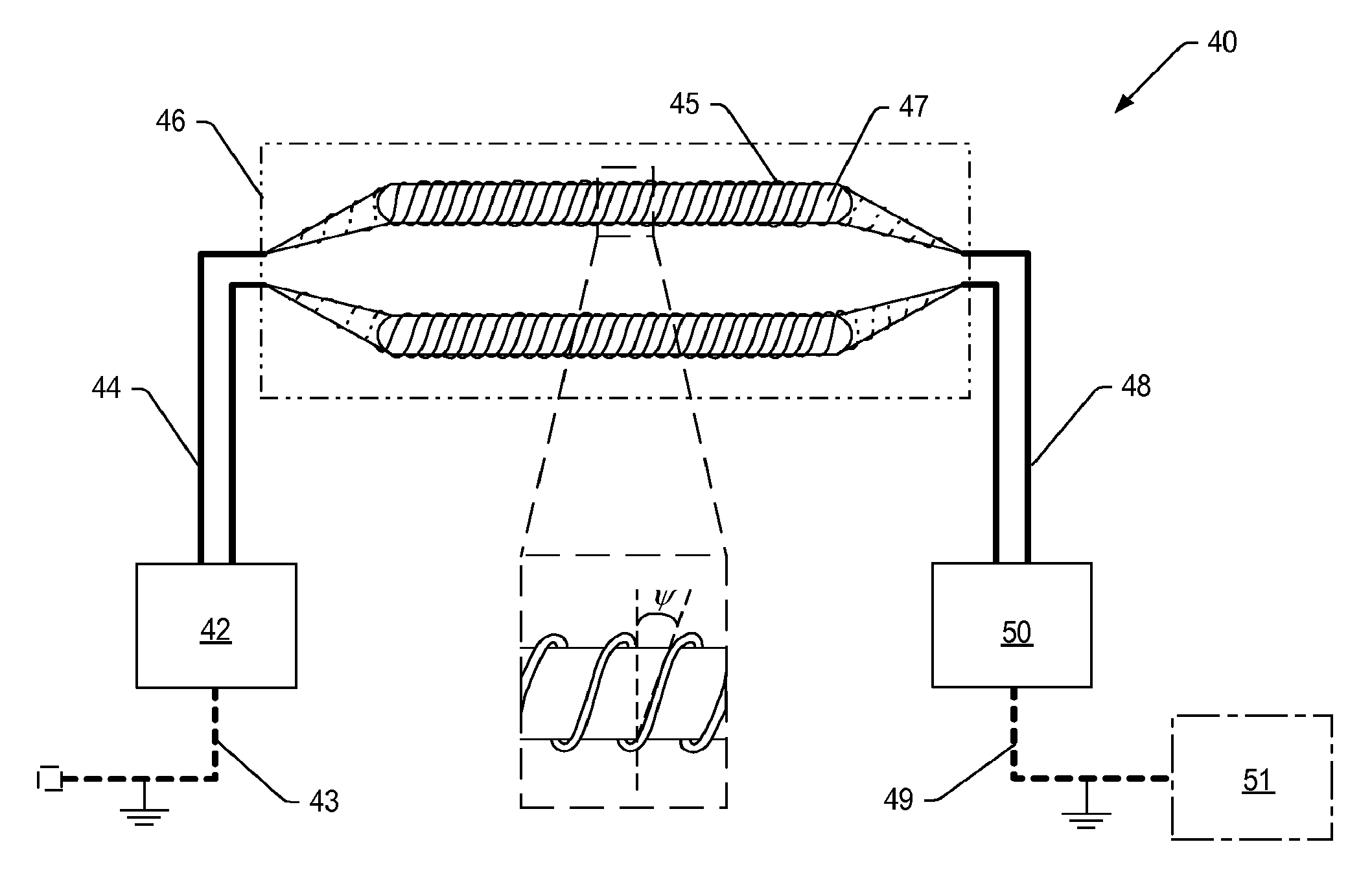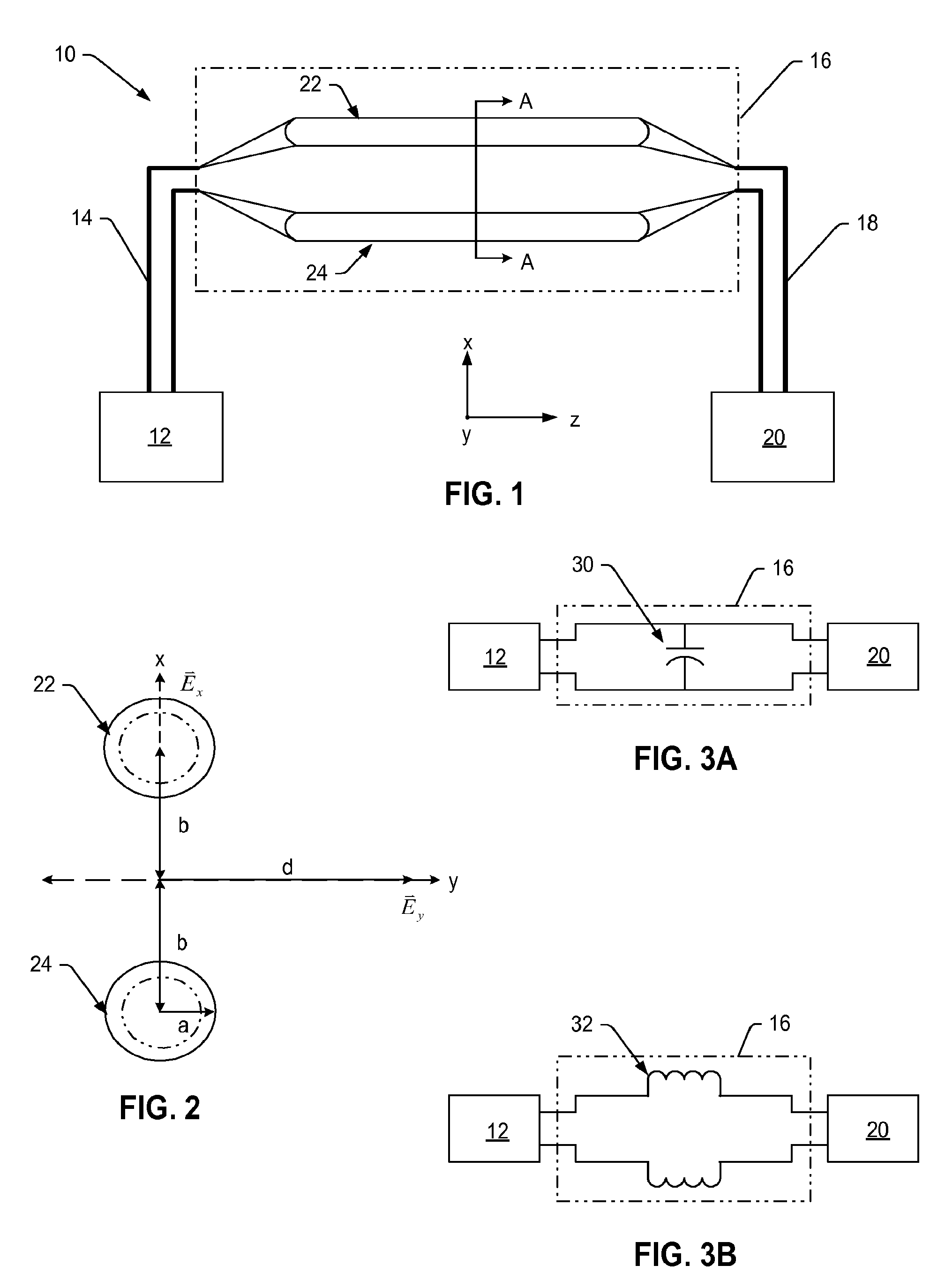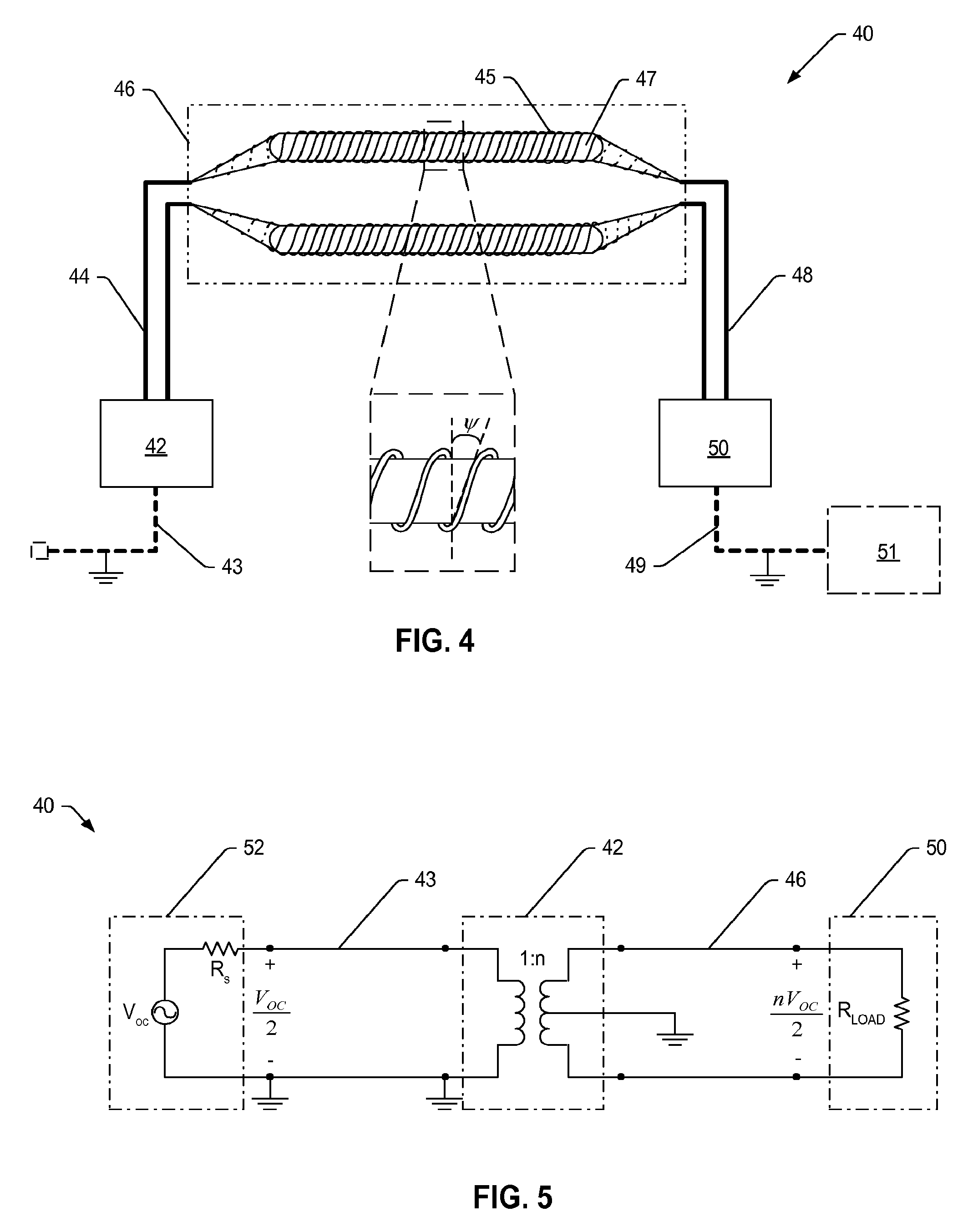Electric field generator incorporating a slow-wave structure
a technology of electric field generator and slow-wave structure, which is applied in the direction of resistance/reactance/impedence, waveguides, instruments, etc., can solve the problems of increasing background noise level, adversely affecting the performance of electronic systems, and electromagnetic energy may produce varying levels of interference, so as to increase the external inductance of the transmission line structure, increase the length of the current path, and increase the effect of path length
- Summary
- Abstract
- Description
- Claims
- Application Information
AI Technical Summary
Benefits of technology
Problems solved by technology
Method used
Image
Examples
Embodiment Construction
[0038]Turning now to the drawings, FIG. 1 is a block diagram illustrating one embodiment of a transmission line E-field generator 10 including a pair of conductive elements (or “conductors”) 22, 24 driven by a power source 12 and terminated by a balanced resistive load 20. In this manner, the transmission line generator of the present embodiment is essentially a two-conductor, balanced transmission line, which supports wave propagation in a transverse electromagnetic (TEM) mode. In TEM mode, the generated electric and magnetic fields are both transverse (i.e., x and y directions) to the direction of wave propagation along the longitudinal axis (z) of the transmission line. As such, the electric and magnetic fields along the longitudinal axis are essentially zero (i.e., Ez=Hz=0), while the transverse electric and magnetic fields can be expressed as quasi-static vector quantities. In other words, the field distribution over a transverse plane of a transmission line is substantially a ...
PUM
 Login to View More
Login to View More Abstract
Description
Claims
Application Information
 Login to View More
Login to View More - R&D
- Intellectual Property
- Life Sciences
- Materials
- Tech Scout
- Unparalleled Data Quality
- Higher Quality Content
- 60% Fewer Hallucinations
Browse by: Latest US Patents, China's latest patents, Technical Efficacy Thesaurus, Application Domain, Technology Topic, Popular Technical Reports.
© 2025 PatSnap. All rights reserved.Legal|Privacy policy|Modern Slavery Act Transparency Statement|Sitemap|About US| Contact US: help@patsnap.com



